Somewhere Personal: The office of Juniper Tedhams
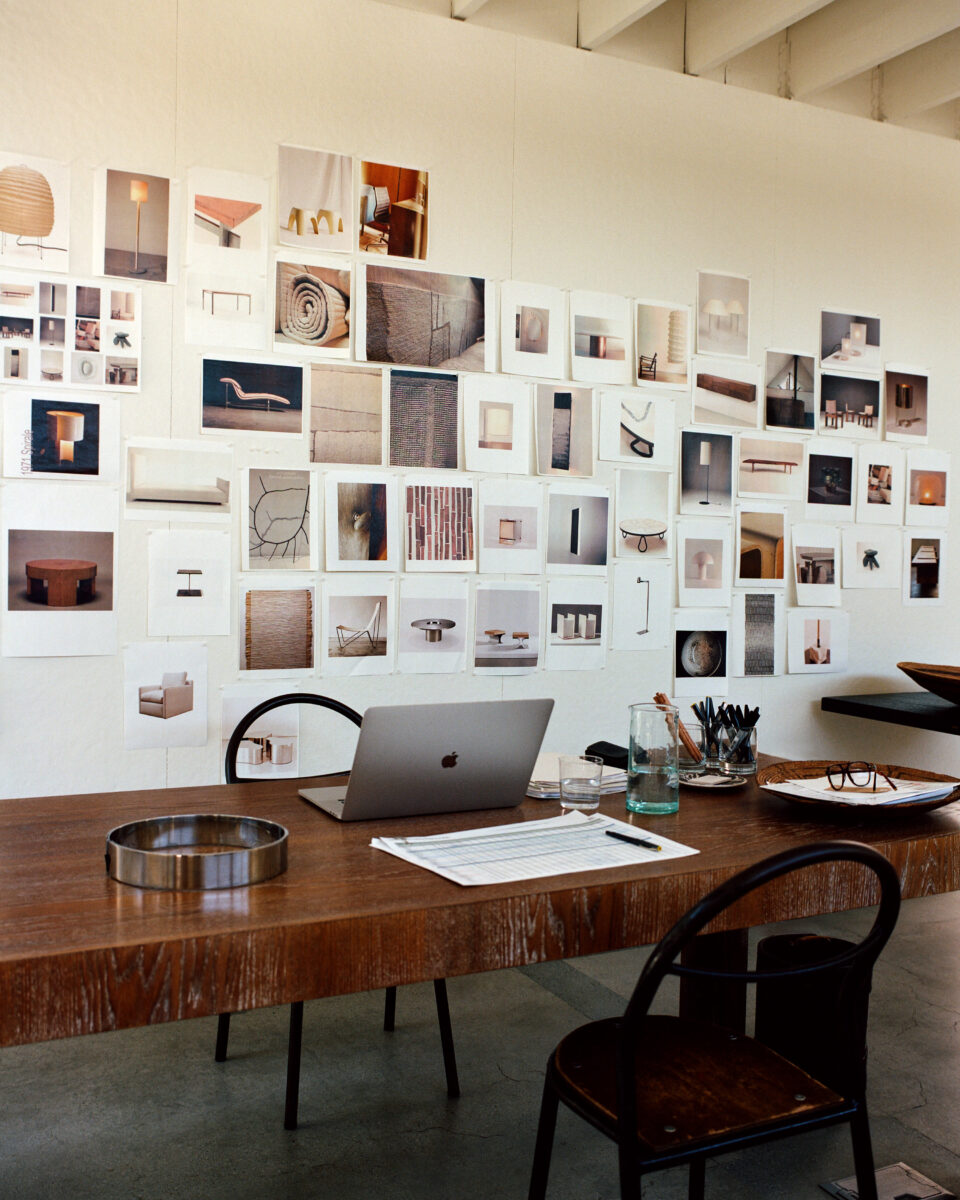
- Photography byAlexandra Nataf
- Styling and Interview by Lauren Davis Britvan
- Words byNicholas Goodman
2
Stepping into the office of Juniper Tedhams one is immediately transported into an oasis of taste and tranquility. It’s a fitting home for the interior designer who has earned a reputation for creating spaces that feel eminently lived in and loved. The calm and airy studio also serves as a portal into her creative process: a canvas on which she can exercise her prismatic imagination and express her desire to beautify and organize the world.
Intelligent, witty and wide-ranging in her curiosity, Ms. Tedhams is a true rarity in her craft. People who know her say that she has uncanny instincts for what her discerning roster of clients are after. She is adept at interpreting their ideas through her own creative lens into interiors that are both subtle and multilayered. She sees things microscopically, always with the aim to refine, refinish and reinforce the personality of a space and the person who lives in it.
More concerned with the subtraction of details than their addition, Ms. Tedhams could be characterized as a minimalist. But in her approach there is also something more, something ineffable. Her work is full of personal touches gracefully incorporating vintage rarities she’s collected over the years with her own bespoke furniture. She understands the magic that emerges layer upon layer, weaving together textiles and pieces of varying styles and eras into one immersive vision.
The common thread throughout her work, unsurprisingly, is quality. Ms. Tedhams envisions each individual project as a medium for self-expression and the creative alchemy that blossoms with a client as an art unto itself. For her, instinct and emotion are inseparable. Her interiors are confident and beautiful while also being impeccably arranged and refreshingly understated. These are spaces made to contain lives; rooms that are timeless, that evoke a sense of comfort. After all, in the end, isn’t that the whole point?
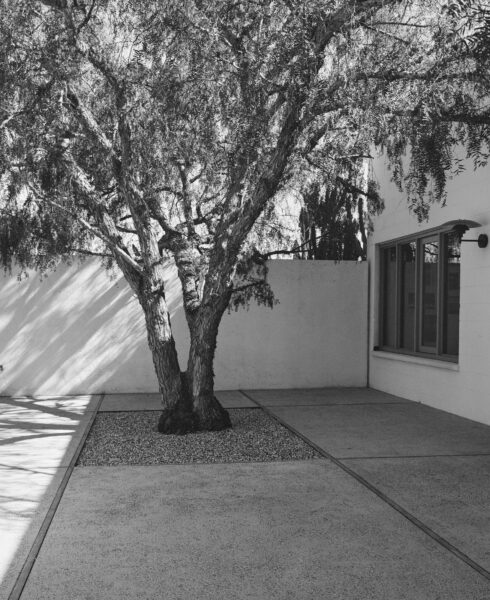
Lauren Davis Britvan: Originally from New York, in recent years you now call Los Angeles home. How has this change of environment influenced your sensibilities and approach to the spaces you design and inhabit?
JUNIPER TEDHAMS: There’s a freedom working in LA that just doesn’t exist in NY. So many different kinds of architecture and environments that vary wildly. I used to find it daunting, but it’s so exciting to jump from one world into something completely different in the course of a day. Working in LA has really expanded my frame of reference.
LDB: You have a distinct point of view. How would you describe your style and what makes it personal to you?
JT: This is always the most difficult question for me to answer. I wouldn’t say that I have a style that’s easy to categorize. I feel like each project takes so much from the environment, the client, the style of architecture, that they all have a personality
of their own. I guess the common thread is that we don’t often work with products. With the exception of a few younger artists, we generally use vintage or antique pieces and support those
with custom work. I think regardless of the style of something, the work I do is pretty quiet. There’s a lot more going on than you can immediately register.
LDB: Are there particular elements that you decide upon in the early stages of a project, in which you believe set the tone of a space?
JT: Absolutely! But it’s never the same approach. Sometimes it’s something the client already owns that sets the tone for the entire project or one incredible vintage piece we find that defines our story about a space. In absence of an early spark of inspiration, we’ll start with the anchors: rugs are hugely important as well as the large upholstery pieces. The style of a sofa tells you almost everything about a room.
LDB: Your work has the harmony of a reductionist yet the projects you have designed display a rich tactility. Which components do you believe are worth investing in and where can one find opportunities to save?
JT: Rugs and fabrics are always worth investing in. And good upholstery.
There’s this mania for collectible design right now- there aren’t really “deals” like there used to be, but there’s so much good furniture out there that isn’t attributed to a known
maker. I would start there. Spend on the foundational pieces and avoid trends.
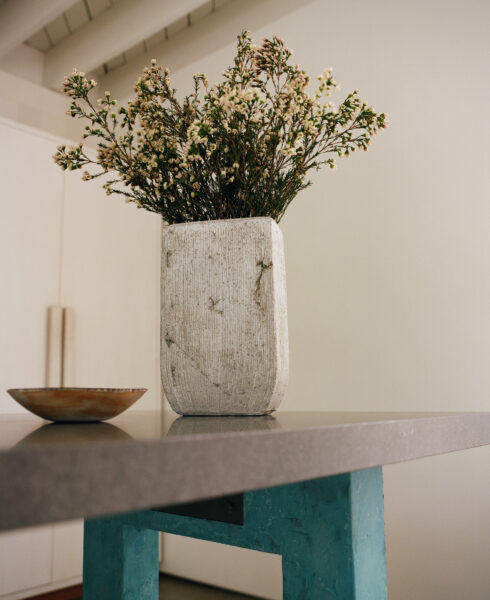
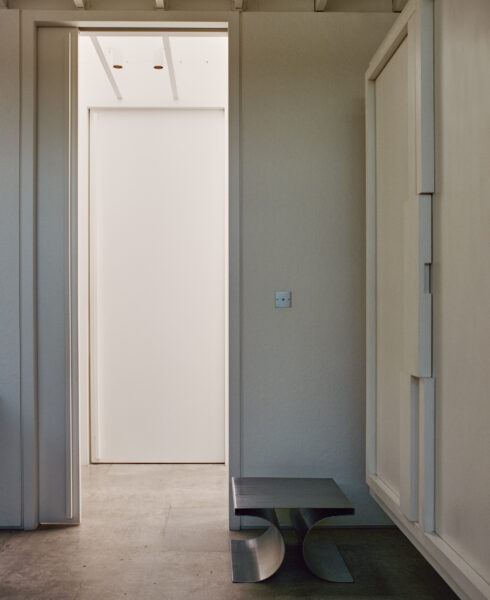
LDB: Your projects consist of quite a lot of custom designed and crafted millwork and rugs. What advice do you have for others who would like to explore bespoke pieces in their own space?
JT: Be prepared to fail! I’m only sort of joking. Custom work is hard. You have to be totally clear in your vision and able to communicate it. Assume that anything you have’t specifically articulated will be done exactly the opposite of how you want it. If you can’t draw, you should have someone draw it for you. Work with the best vendors you can afford and always ask for samples.
LDB: Is there an individual whose work and/or life ethos has helped to formulate your point of view, and in which you continue to come back to?
JT: I always look to the work of other designers I admire. Frederic Mechiche, Jacques Grange, Stephen Sills, Rose Tarlow. They have such distinct personalities but the work is
fluid in a way I really admire. It’s something I hope my work does at its best. You can see the through line and almost always tell it’s their work, but the spaces aren’t formulaic in any way.
LDB: Do you feel that a timeless space is intuitive or more studied?
JT: I don’t think I can separate the two! I would love to say intuition always. And for the most part that’s true. I love seeing something I haven’t before, or someone approaching interiors in a way completely different than I would. It’s such a strange time for interiors. There’s more content than ever, but so few singular voices. So seeing something that feels intensely personal is always inspiring. All that said, I’m such a control freak, it’s hard for me to completely submit to intuition. I’m a compulsive editor (ruthless at times) so it would be insincere for me to not acknowledge that part of the process.
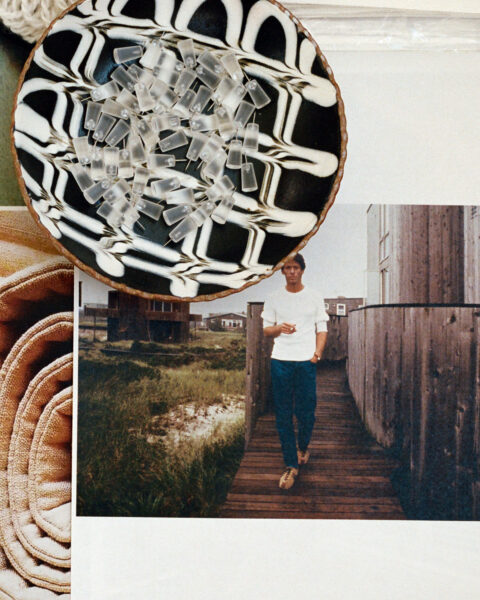
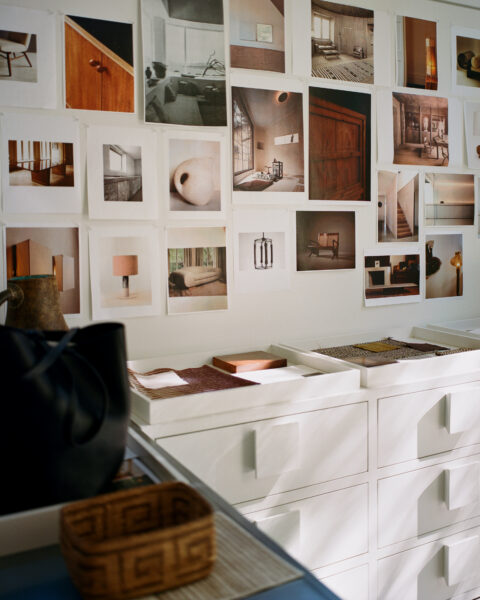
LDB: What are three elements you wish people would place emphasis on to enhance the space in which they work?
JT: I don’t think I can speak to how other people work, everyone has a type of environment they feel good in. If we’re talking about how people live in general, I would say:
Having a place for things. The ability to put things away and clear the decks. I don’t actually mind clutter if it’s purposeful clutter like a desk full of papers and samples- it feels good to be in the middle of that process- but there’s something transformative about a space where everything has a home. Lighting! Adding more than one source of light. It makes a huge difference to have light at different levels in a space. Overhead lighting is extremely useful, but adding other layers of light gives depth and warmth to a space. Beauty. Sounds silly to have to say it, but I think there’s this
feeling that work is just about efficiency and results. We forget to embellish and surround ourselves with things that make us feel good. That does not mean having tons of stuff around, to me it means making the space you’re in, a room you really enjoy.
LDB: In which environment do you feel most creative? Do you prefer to work in silence or have music playing..
JT: It depends on what I’m working on. If I’m drawing or on a roll with something, music can be an incredible engine, but if I’m working through a problem or a complicated element of something, music can be way too distracting. My husband and I work near each other (his office is right next to mine) and we’ll often have music cranking after hours. I’m not really a playlist person. I guess I’m getting old in that I really love to listen to an entire album. We have a terrible habit of burning out music by listening to the same album on repeat for weeks on end.
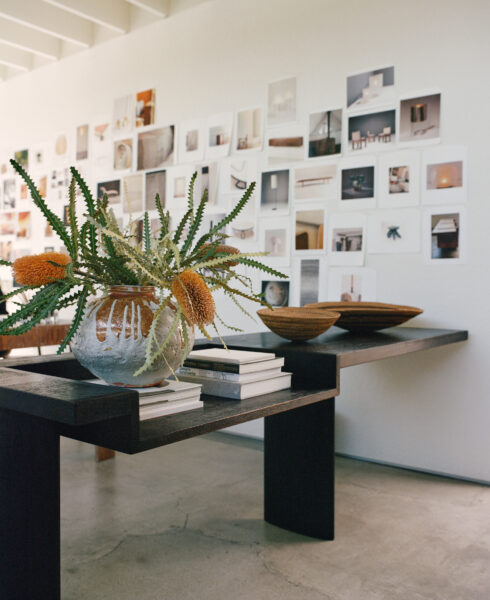
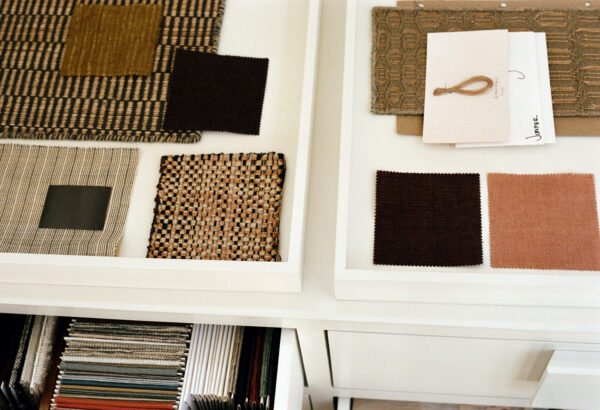
LDB: What differs in your approach when it comes to furnishing your own space compared to that of a clients?
JT: That’s an easy one. My own space is never finished. It’s always in flux. You can’t do that with clients. You have to make peace with your decisions when it’s for someone else.
It’s harder when you’re doing that for yourself.
LDB: If you could have any artist on your walls..
JT: Oh that’s impossible. Ask me tomorrow and I’ll have a different answer. Right now, I’d love to have some giant Morris Lewis in a chrome frame. If you asked me yesterday
I might have said I wanted a Cornell Box. I’m all over the place depending on what I’m looking at on a given day.
LDB: Advice that has been passed onto you from other designers…
JT: Do your own thing and don’t compare yourself to other practices.
LDB: A reliable piece you find yourself placing repetitively
in several projects..
JT: It’s probably obvious if you look at any of my work, but there’s almost always a Noguchi lamp or a Native American basket from the 1940’s.
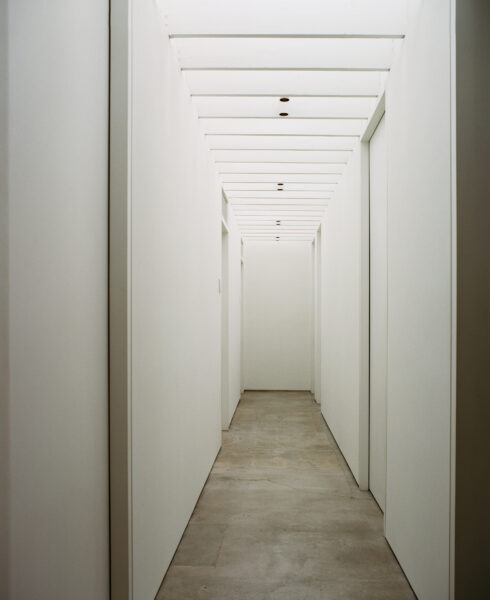
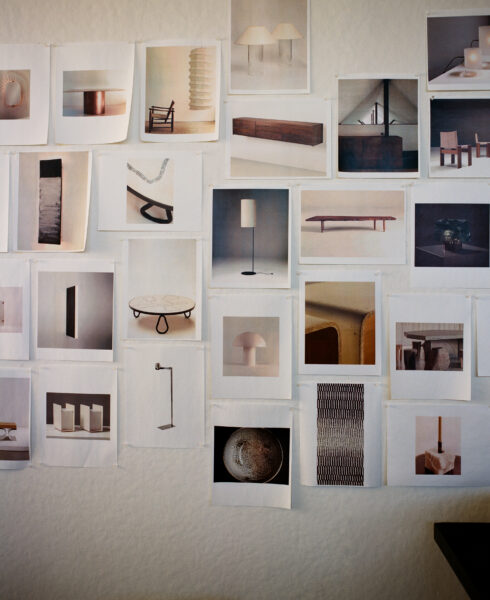
Juniper on her approach to designingMy own space is never finished. It’s always in flux. You can’t do that with clients. You have to make peace with your decisions when it’s for someone else. It’s harder when you’re doing that for yourself.
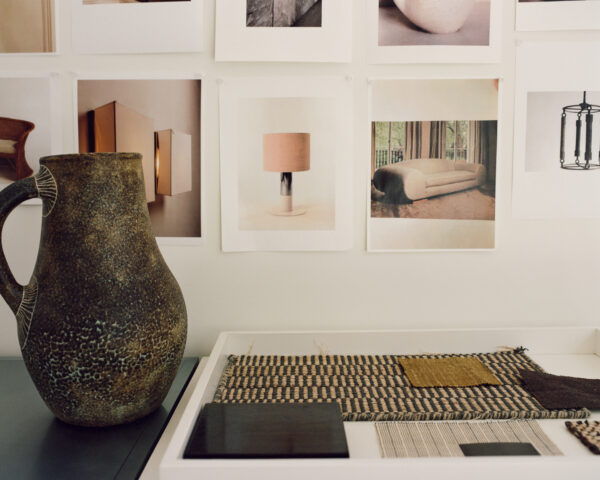
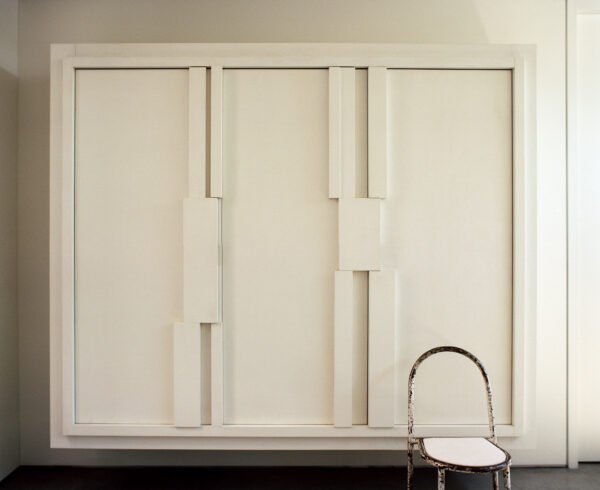
LDB: You mentioned you don’t get too attached to ‘things’, maybe a quality you collected from your time as an antiques dealer. Although, in saying this, do you have a single cherished acquisition you could never part with?
JT: Other than my wedding ring, probably not. I can kind of let anything go. I think anything I acquired on my own, before I started collecting with my husband, is on the table.
Zero attachment. We have acquired a couple of pieces together that I have a strong attachment to. A rare Roger Capron table is one. Probably our first purchase together.
LDB: What is the best gift you have received?
JT: My husband bought me a car when we were first dating. I was living in NY still and he thought maybe he could lure me to LA with a little 1971 Mercedes 2 door. It wasn’t
precious at all (in fact it needs a lot of work) but it was an incredibly romantic gesture.
LDB: Preferred gift you bring someone when you are invited over to their personal space..
JT: I like bringing something personal that they don’t have to deal with while they’re in the middle of entertaining. Flowers are always welcome, but I don’t bring them without
a container or a plan.
LDB: A beloved place to escape to?
JT: Puerto Escondido. We’ve been going to the same place for 10 years. We got married there.
LDB: Dream project or client?
JT: I’d love to do a tiny hotel with real personality. The kind where every room is its own universe. No giant lobby, just a beautiful restaurant, a bar, a pool and a garden. That’s my fantasy and the kinds of places I enjoy visiting the most.
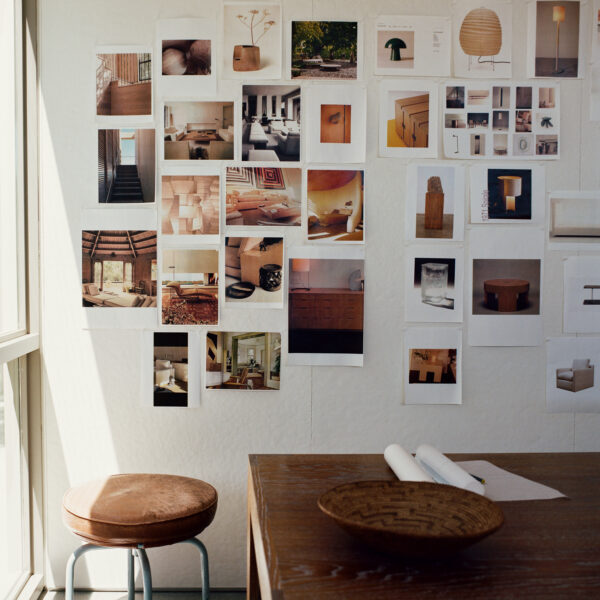
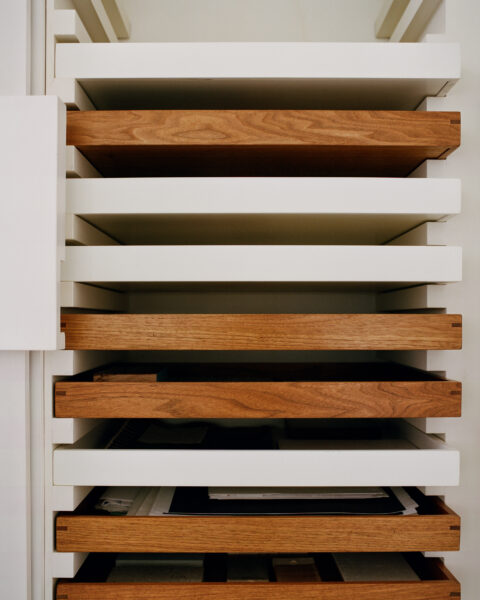
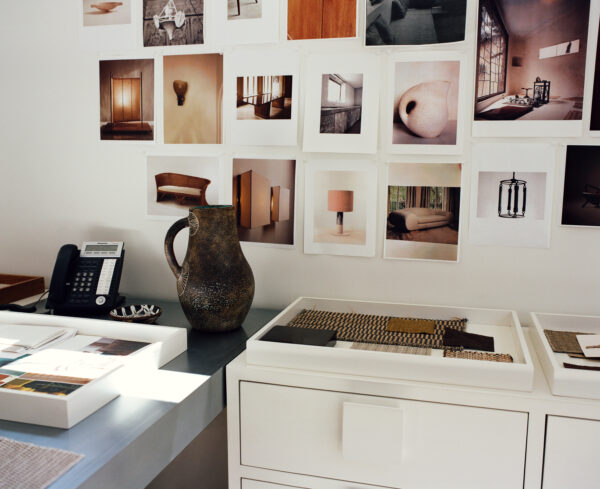
– THE FAVORITES –
ANTIQUE DEALERS:
Galerie Du Passage (Pierre Passebon), Hughes Magen (Magen Gallery) Alexandre Biaggi
GALLERY / MUSEUM:
Natural History Museum in London, Katsura Imperial Villa in Kyoto, Musee D’Orsay & Galerie Du Passage, Paris
INTERIOR DESIGNERS:
Frederic Mechiche, Jacques Grange, Andrée Putman
FURNITURE DESIGNERS:
Philippe Anthonioz, Max Ingrand, Marc Du Plantier
TASTEMAKERS:
Florence Lopez, Salvador Dalï, Jacques Grange, Nicolas Ghesquiére
TEXTILES / FABRIC HOUSE:
Perrine Rousseau, Toyine Sellers
WALL PAINT:
Rarely use the same color twice
BOOKS:
Refiner’s Fire by Mark Helprin
Endurance by Alfred Lansing
Learning From Las Vegas by Robert Venturi
Song of Solomon by Toni Morrison
FLOWERS:
Banksia, Wild Roses, Sweet Peas
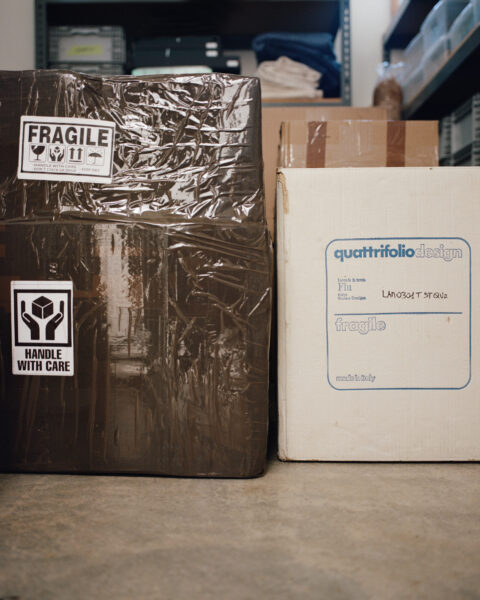
Photography by Alexandra Nataf, Styling and interview by Lauren Davis Britvan, Words by Nicholas Goodman
